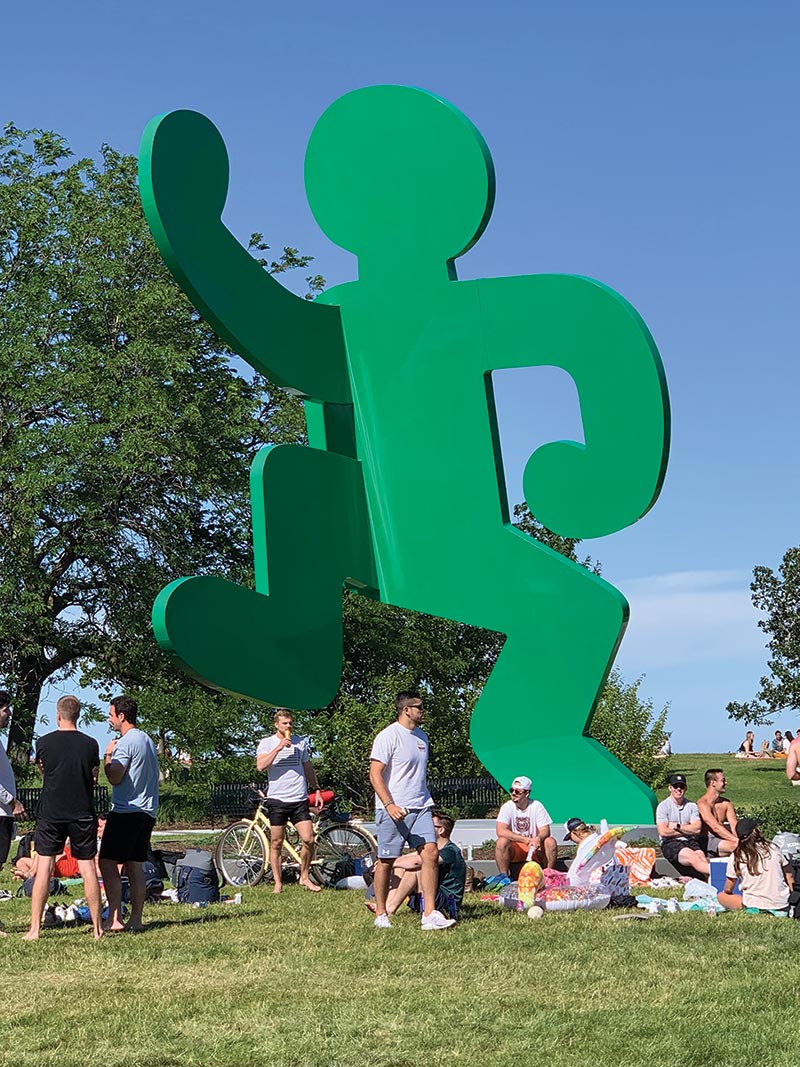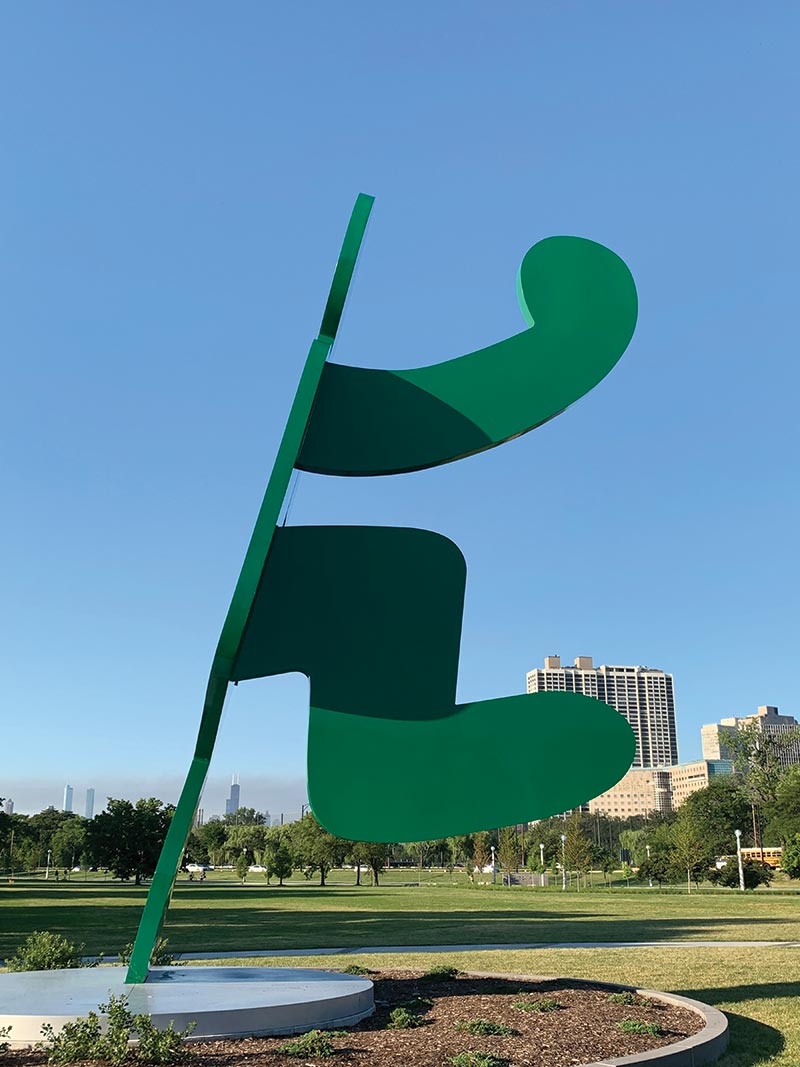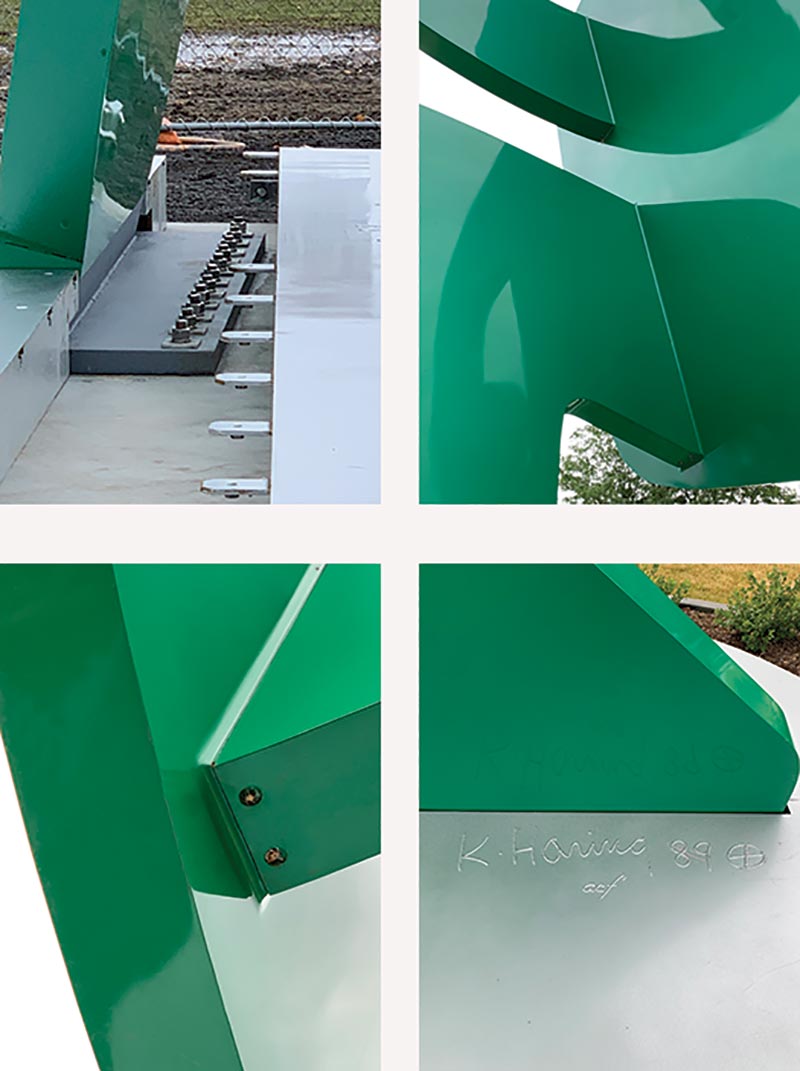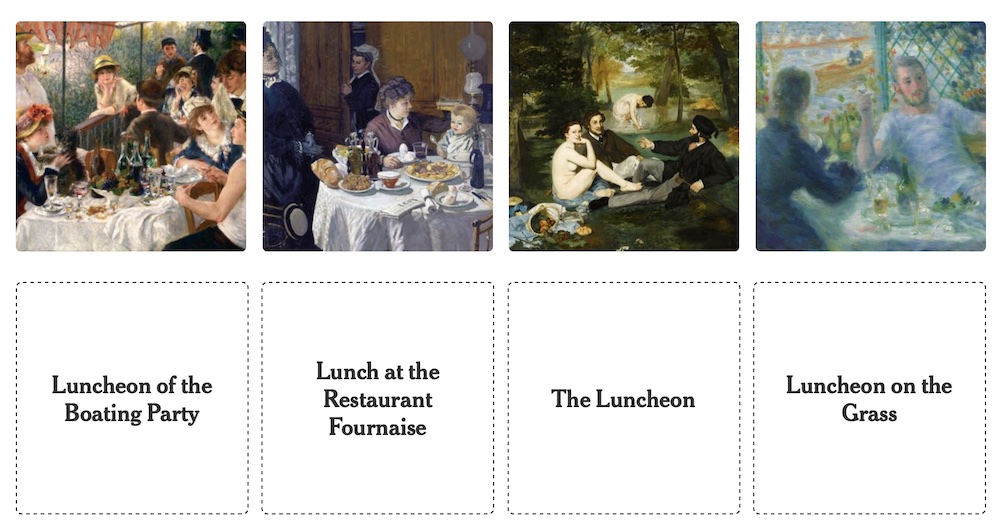Sculpture Report: Keith Haring’s Self-Portrait


By Jason Pickleman
On November 22, 2019, a flat-bed trailer delivered a 30-foot tall sculpture to Chicago’s lakefront. Keith Haring’s iconic work, titled Self-Portrait, would, in two short days, be assembled and installed and act as visual anchor to a new memorial public park: AIDS Garden Chicago. Just east of Lake Shore Drive, and just south of Belmont Harbor, the artwork’s arrival was nothing short of a miracle. For a city known for its public art, the stealth addition to our Picasso, our Calder, and our Miro (not to mention our Kelly, Kapoor, Oldenburg, Ono, Serra; our many Hunts, di Suvero, and over-looked LeWitt) was reason for celebration. Then, the pandemic arrived. The Park was closed. Fences went up. The Lake was off limits. Chicagoans were put on lockdown. And the just-installed Haring stood silent guard along an eerily quiet stretch of what had, until recently, been one of the busiest roadways in all the city.
Self-Portrait’s torso, limbs and head measure 7¾-inches thick, and are finished in a glossy, grassy green with a linear aliphatic polyester urethane—an airplane-grade exterior paint. The sculpture is set back but visible from LSD. It is approached from the west by a series of winding concrete walkways, positioned 110-feet away from the concrete embankment that separates Lake Michigan from the Park. The sculpture can also be approached easily from the east via the lakefront. Black metal benches and an oval lawn surround the sculpture.
Prior to 2003, and specifically in the ‘60s, ‘70s, ‘80s, and ‘90s of the previous century, the area was referred to as ‘the Belmont Rocks’ and was a popular public gathering place for Chicago’s gay communities. Haring, whose short creative life was filled with both political outcry and childish joy, died of AIDS-related complications in 1990 and is often set up as emblematic of his era. Thus the choice of a Haring sculpture to stand as the artistic face of AIDS Garden Chicago is on-point, if obvious.
But obvious doesn’t come easily. The acquisition of Self-Portrait was fraught with logistical hurdles: from financing to construction, a multitude of conflicts could have, and almost did, derail the project. It is testament to 44th Ward Alderman Tom Tunney, art dealer Dennis Rosenthal, Chicago Parks Foundation Executive Director Willa Iglitzen Lang, and Manager of Art Initiatives at Chicago Park District Michael Dimitroff that the project was successfully realized.
AIDS Garden Chicago is the brainchild of Alderman Tunney. Originally conceived in 2003 when the Army Corps of Engineers deemed the Lake Michigan shoreline that contained the Belmont Rocks to be in need of renovation to safeguard against further erosion, the razing of the Rocks sparked the idea for a permanent memorial to the AIDS epidemic. Taking nearly 20 years, the project had its stops and starts. The financial crash of 2008 nearly killed the project, as did COVID-19 in 2020. Tunney’s persistence is Chicago’s gain.
The sculpture is commanding. Depending on one’s proclivities, the depicted faceless figure is either marching, stomping, playing, or protesting. People will see whatever they want within the reductive humanoid form. Haring, in his brief career, excelled at both direct messaging and vague graphic suggestion. To wit, someone suggested to me that the right out-stretched arm of the green figure, when seen in profile, resembles an erect penis. You see what you are ready, or want, to see.

Self-Portrait is dated 1989. According to Rosenthal, a small, cardboard maquette by Haring was used as the model for the sculpture, which was fabricated in Rhode Island by Amaral Custom Fabrication—a vendor recommended by the Keith Haring Foundation. ACF, as Amaral is often abbreviated, has produced more than 400 sculptural works assigned to Haring. Self-Portrait, itself, has been fabricated in multiple sizes. My research indicates a 2-foot tall version exists (in an edition of 10, with 2 APs), as does a 4-foot version (in an edition of 7, with 2 APs), an 8-foot version (in an edition of 5, with 1 AP), as does a 12-foot version (in an edition of 3, with 1 AP). And now a 30-foot version in, I’m told, an edition of 1 (without an AP). Along with Haring’s name, the date “1989”, and a cryptic circle within which is drawn “+” (a graphic symbol deployed by Haring on many of his signed works), ACF has placed its own lower-case initials on the circular base of the sculpture—a well deserved signature of communal authorship.
According to my crack-pot analysis, the figure leans forward at a 75-degree angle from the ground, necessitating an incredibly complex internal engineering that is all but invisible in the finished work. The reductive and planar simplicity of Self-Portrait is one of the sculpture’s greatest accomplishments. The left leg, torso, downwardly curving left arm, neck, and oddly rounded head all reside on a single plane. The sculpture’s right arm, arching up most phallically, creates a modest seam to the vertical plane of the torso, the intersection of which is technically visible by two bolts in the underside of the arm. The figure’s raised right knee appears to be secured similarly, although I’m sure the architecture of the figure’s internal structure belies a deeply impressive, although unseen, set of joinery.
ACF is known for their quality workmanship. The smoothness of their finished surfaces is often cited as the pinnacle of the craft. Roy Lichtenstein has been quoted as greatly admiring the spectacularly slick outer layers that ACF produced for many of his large-scale brush stroke sculptures. Claes Oldenburg is noted as being the first visual artist to commission ACF’s services. Lore has it that Oldenburg showed up with a small maquette for his (now) iconic Spoonbridge and Cherry (Minneapolis Sculpture Garden) and asked if Paul Amaral could produce it to a grand scale. At the time Amaral was only producing custom aluminum racing boats, not sculptural objects. In an oft quoted response with prophetic implications, and no hint of irony as to what the future was to bring, Amaral replied to Oldenburg, “What’s a maquette?” [ed note: A maquette is a sculptor’s small preliminary model or sketch]. Amaral, the master ship builder, knew nothing at the time of contemporary art. All of that changed with Oldenburg’s visit. Amaral caught the art bug and (mostly) ditched the boats. His Rhode Island-based shop now fabricates work for artists such as Jeff Koons, Richard Woods, and Hank Willis Thomas, among many others.
----------------------------
“It is hard to control the thing once it has come out and entered the world. But only I can bring it to the world. The world doesn’t want these things and doesn’t need these things, but when they are here, they are here. Their importance all comes from what other people do with them. If these things are put into a situation they add something to it.”—Keith Haring, 1982
As quoted in Keith Haring Journals, Penguin Classics Deluxe Edition, ©1996, page 103.
----------------------------
Haring noted, before he died, that Self-Portrait was to be a steel sculpture. A 30-foot steel sculpture leaning at an odd angle presents an enormous engineering challenge, so much so that ACF recommended that the sculpture be made of polished and painted aluminum joined to an internal steel armature: aluminum AND steel—thus honoring Haring’s technical description. The engineering conversations around this issue nearly ended the project. Paul Amaral told me that the hidden engineering of Self-Portrait is one of his finest contributions to the sculpture’s realization.
The logistics of transporting a sculpture so large and heavy were also significant. Examination of road load-limits and bridge heights (with the occasional police escort) were necessary to bring the work half-way across the U.S. Even the location of the work, just off the lakefront, proved an engineering challenge with issues of ground water and extreme wind projections off Lake Michigan influencing the final site. Lawyers, engineers, and politicians were all instrumental in realizing the sculpture. It is probably safe to say that Haring had little of this in mind when he created his small cardboard version.

Questions of ownership inevitably come up when discussing public art. Who owns Self-Portrait? The City of Chicago? The Chicago Park District? The Chicago Parks Foundation? AIDS Garden Chicago? I’ve received conflicting answers, but my money rests on the Chicago Park District as the final custodian. That said, the Chicago Parks Foundation was instrumental in securing funding for the project and is in the process of securing ongoing operating funds, with a Board in development, to keep AIDS Garden Chicago tidy and Self-Portrait in perpetual good shape.
Questions of cost float around as well. No one would give me a straight answer as to what Self-Portrait cost, or what it is worth. A 12-foot tall version sold at Christies in 2014 for $785,000.00. A person connected to the art trade suggested to me a number north of five million dollars, and maybe even closer to ten, as a realistic value for Chicago’s 30-foot version.
Costs and headaches aside, it’s worth asking what does public art do? It can commemorate. Self-Portrait does that. It can demarcate or activate space. Self-Portrait does that as well. It can decorate or animate. Self-Portrait certainly does both. Some art world snobbery might suggest that displaying a Haring sculpture at AIDS Garden Chicago is an obvious choice, an easy choice, and one that leaves the potential of a more avant-garde, or more risky, artwork on the table. I say PHOOEY. As any designer knows: Sometimes you need to play to the crowd. The iconic quality of the marching green figure screams HARING to many, and joy to most.
As of this writing, Self-Portrait does not have a conventional plaque noting its creator, materials, date or size. A testament to Haring’s genius is that one may not even be necessary.
#
For more information visit AIDSgardenchicago.org





